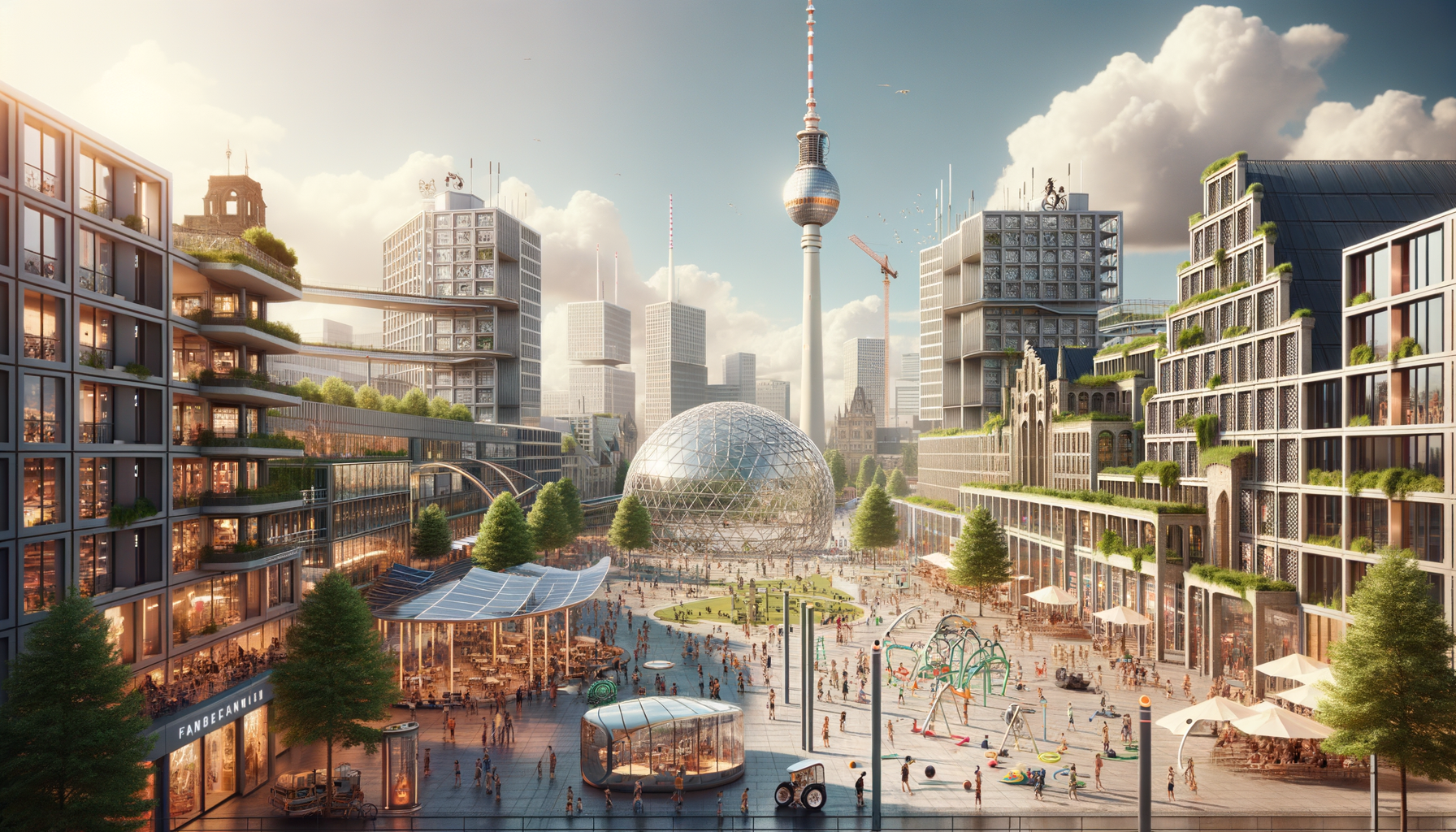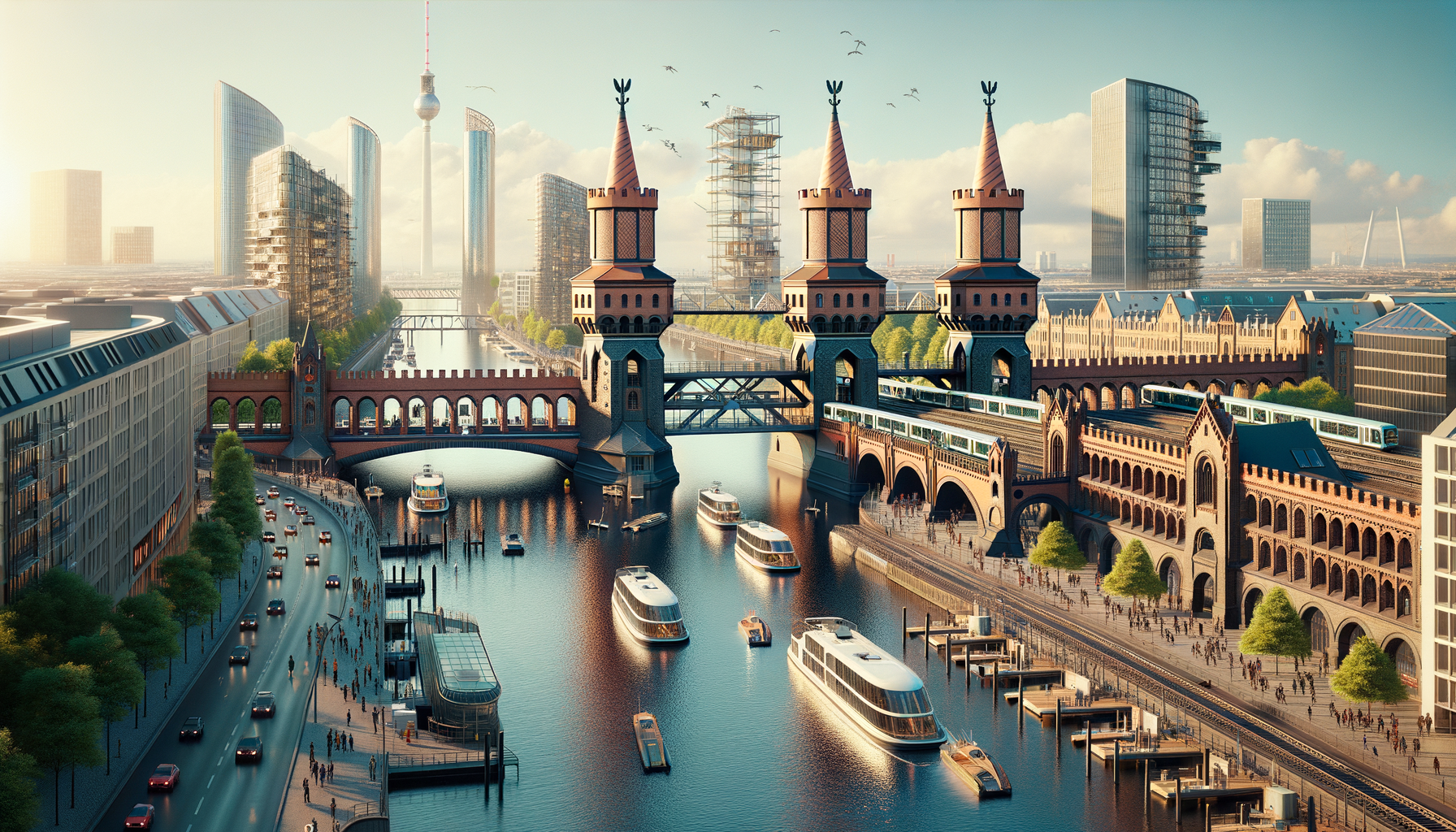Using AI Image Generation for Museum Exhibitions
Read Time 5 mins | Written by: Dr. Cecilia Maas
An AI-generated image exhibition in a museum? This might initially seem unacceptable to many. Museums are traditionally seen as guardians of history and science, of truth. However, they also bear the responsibility of encouraging critical thinking and reflection. So, why not leverage the vast potential of artificial intelligence to present visitors with tangible and experiential "what if..." scenarios?

We had the pleasure of developing an AI image generation system for the new permanent exhibition at the Berlin City Museum, BerlinZEIT. As part of a chronological exhibition on Berlin's history, the project team decided to include an epilogue room. Here, they would depict the city's future using artificial intelligence. How might Berlin evolve in the next 50 years? How do individual visitors envision their own futures as Berliners or tourists? Together with the media-station developers of Panorama-B and the museum's team, we embarked on a project to design an AI that could help exhibition visitors reflect on possible futures. This post shares our insights and lessons learned from developing an AI image generation system for a museum exhibition.
How Does AI Generate Images?
Before discussing the challenges and benefits of using AI-generated images in museum displays, it's essential to understand how AI image generation works. These models are trained on extensive datasets with a huge variety of images, and learn from the patterns, shapes, textures, and colors in the data.
Some systems are text-to-image models, meaning they convert text input into a corresponding image. This process involves transforming the text into a mathematical representation that captures the context and meaning of the words. This representation then serves as input for the model to generate images.
For example, if we want the model to create a realistic image of Berlin city with people biking near the Brandenburg Gate, the model first needs to understand this text. Having analyzed millions of text fragments containing the word "bicycle," it knows it refers to a two-wheeled vehicle. Similarly, it recognizes "Brandenburg Gate" as a Berlin monument with a door-like shape and columns. The model then generates an image matching the description, using its learned knowledge about image features and mapping it to the mathematical representation of the words in the text. It might use combinations of colored pixels that form the shape of a bicycle, based on other images it has seen, and so on.
Generating Futuristic Images for the Berlin City Museum
Generating images of the future with AI poses challenges on several levels. For a long time, imagining the future of cities has woke the interest of architects, artists, historians and many more. Now, AI adds a new dimension to this fascination. It provides a tool that allows us to generate thousands of possible urban landscapes, each one reflecting different possibilities and outcomes, in order to have an in-depth reflection on these potential developments. The possible spectrum of how to envision the future is very broad. We could imagine it as a rather linear continuity of current trends, or we could expect radical changes to happen. We could hope for more positive aspects of today’s reality to be emphasized or the most negative to win. We could imagine utopias or distopias.
In the epilogue room of the BerlinZEIT exhibition, the goal was to depict Berlin approximately 50 years from now, portraying an optimistic future with advancements in ecological sustainability. Within this context, the curatorial team wanted to present visitors with different visions for the city's future. Would it be a city where community thrives outdoors, or would comfortable housing promote more time spent alone indoors? Would public transportation dominate, or would private cars remain prevalent? Would the architecture lean towards modern styles, or maintain traditional designs? Would the city be mostly attractive for younger or older people?

To translate these goals into technical development, we performed the following tasks:
- We undertook technical tests and experiments to determine the most suitable technology stack. We needed a model that could generate a large volume of images programmatically, rather than manually creating each one. We evaluated whether to transform existing images by modifying parts of them or to generate entirely new ones. Ultimately, we chose to generate new images because it resulted in better image quality. Initially, we considered Midjourney, Stable Diffusion, and DALLEE as the leading image generation models. After thorough testing and evaluation, we decided that DALLEE best met all our requirements.
- In collaboration with the museum's teams, we collected images of well-known landmarks and areas in the city. We aimed to identify elements that would make the city most recognizable. We then determined which landmarks the chosen image generation model could best represent. Specifically, we looked at which landmarks could be combined with different features and still be identifiable. We narrowed our choice down to six landmarks: Brandenburg Gate, Berlin Cathedral, Fernsehturm, Oberbaumbrücke, the Parliament, and the Siegesäule.
- We defined attributes that would represent common future aspects of the city in all images. We reviewed scientific and artistic work, focusing on elements that portrayed a somewhat utopian but fairly realistic view of the urban future. We selected a few features: solar panels, green areas, biodiversity, modern and ecological construction materials, and advanced telecommunications.
- For each option provided to the visitor, we identified visual elements that would represent it in a picture. This task was challenging as envisioning the future often involves abstract thinking, more related to emotions than concrete elements. We depicted a city attractive to younger people with features like playgrounds, outdoor cafes, and live music. For older people, we included sitting areas, ramps and elevators for assisted mobility, and outdoor gathering places. A city prioritizing public transportation was represented with buses, trains, bike stations, broad sidewalks, and narrow streets. Conversely, a city designed for cars had wider streets and narrower sidewalks. We iterated these elements in the prompts until we achieved satisfactory results.
Challenges and Opportunities of AI-Image Generation in Museum Context
Using AI-generated images in a museum context is appealing as it can enhance the museum experience in several ways:
- It offers an interactive and engaging method for exploring possible scenarios, allowing the visitor to become an active participant in the exhibition.
- AI-generated images can present ideas for which there may not be suitable objects in the institution's holdings.
- As high-quality images, AI-generated visuals can be projected in large sizes to create an immersive experience.
- Designed as modular systems, generative models can be updated and produce new output as technology advances, requiring little technical development effort.
However, using AI image generation in a museum context also presents certain challenges:
- Legal matters should be considered. It needs to be clarified whether the images generated by the model can be freely used in the intended context.
- Visitor expectations may vary. While some might welcome an experimental experience interacting with images generated by a computational system, others might be skeptical.
- The system should be designed according to the available infrastructure. For example, it may or may not be possible to create images on the fly depending on the internet connection in the exhibition room. The size of the images should be adaptable to the assigned storage capabilities and projection hardware.
Overall, implementing AI image generation within a museum context is a promising endeavor that fuses technology and creativity to enhance the visitor experience.
Information about the exhibition BerlinZEIT: https://www.stadtmuseum.de/en/exhibition/berlinzeit

